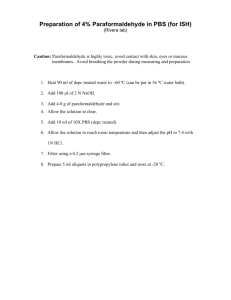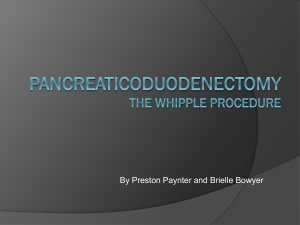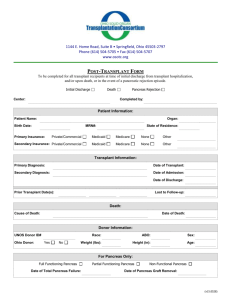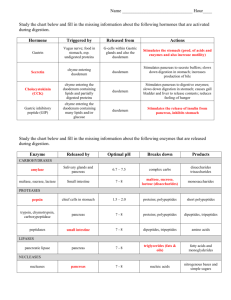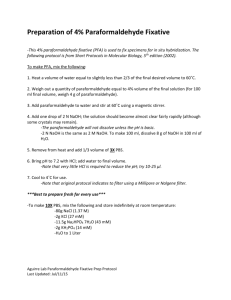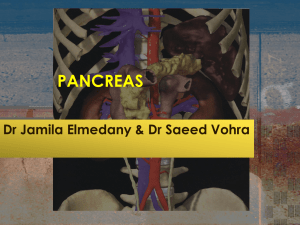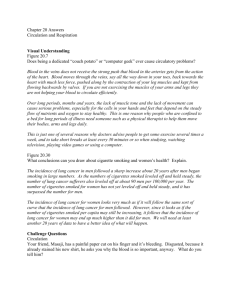Protocol_Tissue and fluid collection following pancreatitis
advertisement
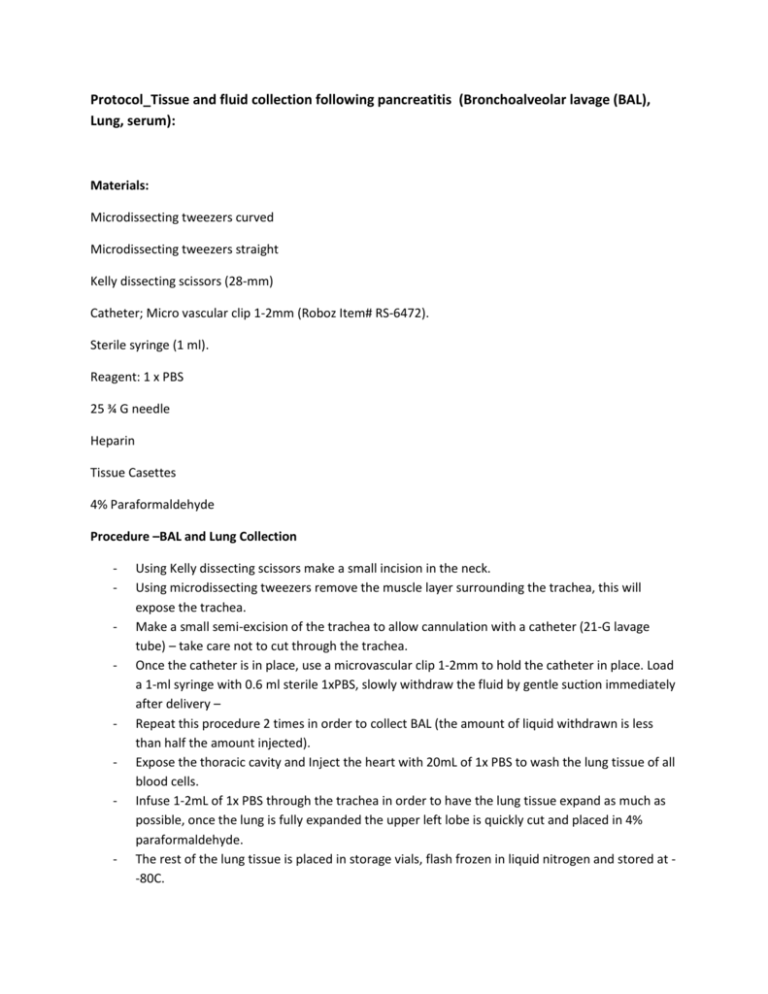
Protocol_Tissue and fluid collection following pancreatitis (Bronchoalveolar lavage (BAL), Lung, serum): Materials: Microdissecting tweezers curved Microdissecting tweezers straight Kelly dissecting scissors (28-mm) Catheter; Micro vascular clip 1-2mm (Roboz Item# RS-6472). Sterile syringe (1 ml). Reagent: 1 x PBS 25 ¾ G needle Heparin Tissue Casettes 4% Paraformaldehyde Procedure –BAL and Lung Collection - - - Using Kelly dissecting scissors make a small incision in the neck. Using microdissecting tweezers remove the muscle layer surrounding the trachea, this will expose the trachea. Make a small semi-excision of the trachea to allow cannulation with a catheter (21-G lavage tube) – take care not to cut through the trachea. Once the catheter is in place, use a microvascular clip 1-2mm to hold the catheter in place. Load a 1-ml syringe with 0.6 ml sterile 1xPBS, slowly withdraw the fluid by gentle suction immediately after delivery – Repeat this procedure 2 times in order to collect BAL (the amount of liquid withdrawn is less than half the amount injected). Expose the thoracic cavity and Inject the heart with 20mL of 1x PBS to wash the lung tissue of all blood cells. Infuse 1-2mL of 1x PBS through the trachea in order to have the lung tissue expand as much as possible, once the lung is fully expanded the upper left lobe is quickly cut and placed in 4% paraformaldehyde. The rest of the lung tissue is placed in storage vials, flash frozen in liquid nitrogen and stored at -80C. Procedure –Serum collection - A laparotomy is performed and the guts are moved to the animal’s left side to reveal the inferior vena cava located in the abdominal cavity. A heparinized 1 mL syringe is used to cannulate the inferior vena cava The blood is extracted slowly with necessary movement of the needle to facilitate flow of blood into the syringe. The blood is placed in a 1.5 ml eppendorf tube and kept on ice Blood is spun at 10,000 x g for 5 min Serum (i.e. supernatant) is collected and kept at -80C (for short term storage 4C is adequate) Procedure-Pancreas collection - - - Following blood collection, the pancreas is located (using the spleen as a marker for the tail) A picture of the pancreas is taken as it appears inside the animal Using fine forceps, the tail of the pancreas is held and the rest of the tissue is cut away from neighboring small/large intestine. The initial portion of the duodenum is located by looking towards the distal portion of the stomach. The head of the pancreas is located and the adjacent small intestine section is taken along with the rest of the organ and spleen (this should result in one long piece of pancreas tissue flanked by spleen at the tail and duodenum at the head) If the pancreas is excessively bloody it is briefly washed in cold 1X PBS The pancreas is laid out alongside a ruler and a second picture is taken The head and duodenum are separated in one piece from the rest of the tissue and placed in a tissue cassette. Remaining pancreas tissue is sectioned (as necessary) and flash frozen in liquid nitrogen. The cassette is placed in 4% paraformaldehyde The cassettes are delivered the following day to the histology core in 4% paraformaldehyde. The histology core embeds the tissue in paraffin, sections the tissue on glass slides and stains with Hematoxylin and Eosin
